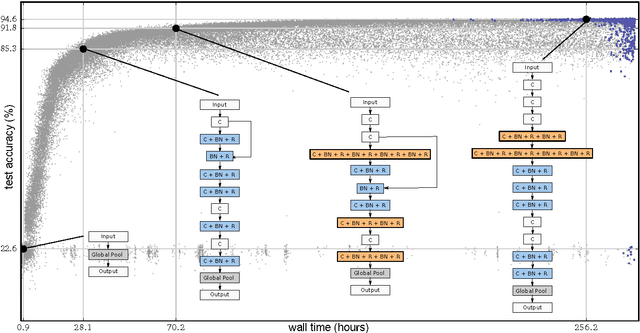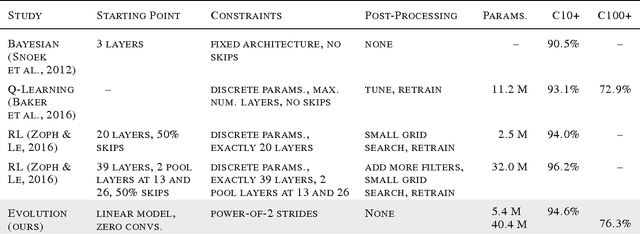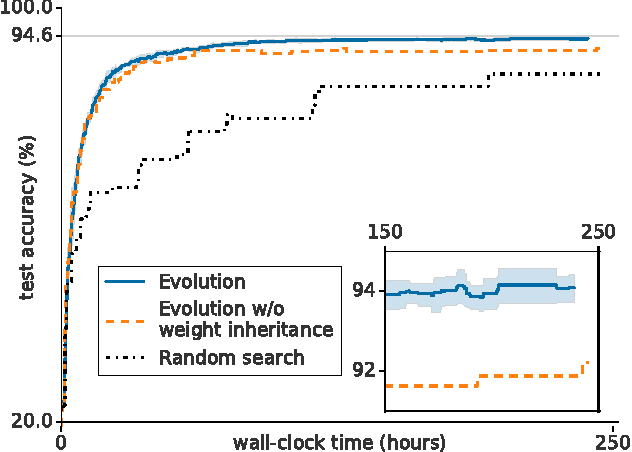Large-Scale Evolution of Image Classifiers
Paper and Code
Jun 11, 2017



Neural networks have proven effective at solving difficult problems but designing their architectures can be challenging, even for image classification problems alone. Our goal is to minimize human participation, so we employ evolutionary algorithms to discover such networks automatically. Despite significant computational requirements, we show that it is now possible to evolve models with accuracies within the range of those published in the last year. Specifically, we employ simple evolutionary techniques at unprecedented scales to discover models for the CIFAR-10 and CIFAR-100 datasets, starting from trivial initial conditions and reaching accuracies of 94.6% (95.6% for ensemble) and 77.0%, respectively. To do this, we use novel and intuitive mutation operators that navigate large search spaces; we stress that no human participation is required once evolution starts and that the output is a fully-trained model. Throughout this work, we place special emphasis on the repeatability of results, the variability in the outcomes and the computational requirements.
 Add to Chrome
Add to Chrome Add to Firefox
Add to Firefox Add to Edge
Add to Edge